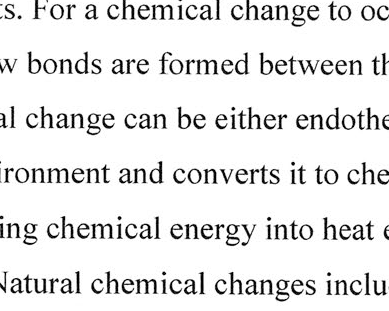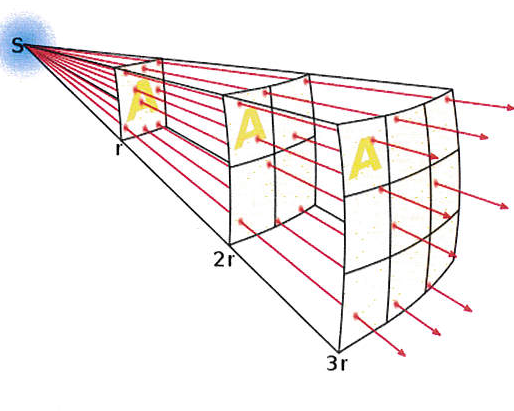- Home
- Resources
- Work samples
- Samples
- Natural and man-made impact on ecosystems – ABOVE
Science
Year 9
Above satisfactory
Natural and man-made impact on ecosystems
Summary of task
In a teaching and learning unit on ecology, students learnt about energy and matter transfer in an ecosystem using food chains and food webs, different relationships between organisms in an ecosystem, sustainability, and natural and man-made impacts on ecosystems. Students had also participated in an excursion to a botanic garden to experience a variety of ecosystems and to learn more about food chains and food webs.
This task consists of two parts. In the first part, students were given a list of research questions about key concepts relating to ecosystems. They were asked to individually research those concepts and create a research report by responding to each of the questions.
In the second part, students worked in groups to research an Australian ecosystem of their choice from three different perspectives:
- How are energy and matter recycled in the ecosystem?
- What are the different organisms other than humans that live in this ecosystem and what relationships exist between them?
- What natural and human influences exist that impact on this ecosystem? Is there a way to mitigate those impacts or is there ongoing research to find ways to reduce the impacts?
As a group, students were asked to prepare a brochure intended to inform their peers on this topic. The brochure was to include a food web of the chosen ecosystem. The group was also asked to prepare a presentation to explain their brochure in detail.
Achievement standard
By the end of Year 9, students explain chemical processes and natural radioactivity in terms of atoms and energy transfers and describe examples of important chemical reactions. They describe models of energy transfer and apply these to explain phenomena. They explain global features and events in terms of geological processes and timescales. They analyse how biological systems function and respond to external changes with reference to interdependencies, energy transfers and flows of matter. They describe social and technological factors that have influenced scientific developments and predict how future applications of science and technology may affect people’s lives.
Students design questions that can be investigated using a range of inquiry skills. They design methods that include the control and accurate measurement of variables and systematic collection of data and describe how they considered ethics and safety. They analyse trends in data, identify relationships between variables and reveal inconsistencies in results. They analyse their methods and the quality of their data, and explain specific actions to improve the quality of their evidence. They evaluate others’ methods and explanations from a scientific perspective and use appropriate language and representations when communicating their findings and ideas to specific audiences.
 1
Annotation 1
1
Annotation 1
Quotes dictionary definition of ecosystem and explains its meaning 2 Annotation 2
Uses examples to illustrate main categories of ecosystems 3 Annotation 3
Displays generic diagram of a food chain explaining key terminology 4 Annotation 4
Explains crucial importance of photosynthesis in energy transfer through ecosystems 5 Annotation 5
Describes how energy is lost during transfer from one trophic level to the next 6 Annotation 6
Uses example to illustrate different energy transfer efficiencies of producers and consumers
-
Annotations
-
1
Annotation 1
Quotes dictionary definition of ecosystem and explains its meaning -
2
Annotation 2
Uses examples to illustrate main categories of ecosystems -
3
Annotation 3
Displays generic diagram of a food chain explaining key terminology -
4
Annotation 4
Explains crucial importance of photosynthesis in energy transfer through ecosystems -
5
Annotation 5
Describes how energy is lost during transfer from one trophic level to the next -
6
Annotation 6
Uses example to illustrate different energy transfer efficiencies of producers and consumers
 1
Annotation 1
1
Annotation 1
Includes diagram to illustrate energy losses during transfer between trophic levels 2 Annotation 2
Explains how matter is transferred through an ecosystem 3 Annotation 3
Links an ecological concept to a fundamental concept of chemistry 4 Annotation 4
Describes how matter is recycled in an ecosystem, supported by diagram
-
Annotations
-
1
Annotation 1
Includes diagram to illustrate energy losses during transfer between trophic levels -
2
Annotation 2
Explains how matter is transferred through an ecosystem -
3
Annotation 3
Links an ecological concept to a fundamental concept of chemistry -
4
Annotation 4
Describes how matter is recycled in an ecosystem, supported by diagram
 1
Annotation 1
1
Annotation 1
Explains why energy cannot be recycled in an ecosystem 2 Annotation 2
Provides detailed explanation of competition within and between species, and includes one example 3 Annotation 3
Defines and explains scientific terminology of inter-species relationships and uses example to clarify meaning
-
Annotations
-
1
Annotation 1
Explains why energy cannot be recycled in an ecosystem -
2
Annotation 2
Provides detailed explanation of competition within and between species, and includes one example -
3
Annotation 3
Defines and explains scientific terminology of inter-species relationships and uses example to clarify meaning
 1
Annotation 1
1
Annotation 1
Defines and explains scientific terminology of inter-species relationships and uses example to clarify meaning 2 Annotation 2
Defines and explains scientific terminology of inter-species relationships and uses example to clarify meaning
-
Annotations
-
1
Annotation 1
Defines and explains scientific terminology of inter-species relationships and uses example to clarify meaning -
2
Annotation 2
Defines and explains scientific terminology of inter-species relationships and uses example to clarify meaning
 1
Annotation 1
1
Annotation 1
Explains meaning of the term adaptation 2 Annotation 2
Describes geographic distribution and climatic conditions of chosen ecosystem 3 Annotation 3
Describes and explains two adaptations of chosen species 4 Annotation 4
Provides image of one adaptation of chosen species
-
Annotations
-
1
Annotation 1
Explains meaning of the term adaptation -
2
Annotation 2
Describes geographic distribution and climatic conditions of chosen ecosystem -
3
Annotation 3
Describes and explains two adaptations of chosen species -
4
Annotation 4
Provides image of one adaptation of chosen species
 1
Annotation 1
1
Annotation 1
Describes negative impacts of a natural event on animal and plant species in an ecosystem 2 Annotation 2
Explains how same natural event can have positive impacts on other ecosystems 3 Annotation 3
Gives detailed historical account of a human-caused ecological disaster 4 Annotation 4
Explains how technological developments and economical drivers led to the event 5 Annotation 5
Explains how the ecosystem changed as a result of human interference 6 Annotation 6
Describes negative impacts on endemic and introduced animal species 7 Annotation 7
Describes adaptations that helped an endemic species to survive 8 Annotation 8
Provides list of sources used to research the topics
-
Annotations
-
1
Annotation 1
Describes negative impacts of a natural event on animal and plant species in an ecosystem -
2
Annotation 2
Explains how same natural event can have positive impacts on other ecosystems -
3
Annotation 3
Gives detailed historical account of a human-caused ecological disaster -
4
Annotation 4
Explains how technological developments and economical drivers led to the event -
5
Annotation 5
Explains how the ecosystem changed as a result of human interference -
6
Annotation 6
Describes negative impacts on endemic and introduced animal species -
7
Annotation 7
Describes adaptations that helped an endemic species to survive -
8
Annotation 8
Provides list of sources used to research the topics
 1
Annotation 1
1
Annotation 1
Provides list of sources used to research the topics
-
Annotations
-
1
Annotation 1
Provides list of sources used to research the topics
Copyright
Cycle of Energy and Matter graphic:
©Laura Guerin, CK-12 Foundation. Published at https://www.ck12.org/earth-science/flow-of-matter-in-ecosystems/lesson/Flow-of-Matter-in-Ecosystems-MS-ES/ under creative commons licence CC BY-NC 3.0. This image has not been modified.
 1
Annotation 1
1
Annotation 1
Identifies major natural impacts on ecosystem, misclassifying impacts due to weeds and feral animals as non-human caused 2 Annotation 2
Identifies land clearing and habitat loss as causes of reduced biodiversity 3 Annotation 3
Describes negative impacts of cyclone on specific rainforest species 4 Annotation 4
Identifies an impact of climate change on plant behaviour 5 Annotation 5
Explains how one feral animal species impacts on chosen ecosystem 6 Annotation 6
Analyses economical drivers and ecological impacts of agriculture on chosen ecosystem
-
Annotations
-
1
Annotation 1
Identifies major natural impacts on ecosystem, misclassifying impacts due to weeds and feral animals as non-human caused -
2
Annotation 2
Identifies land clearing and habitat loss as causes of reduced biodiversity -
3
Annotation 3
Describes negative impacts of cyclone on specific rainforest species -
4
Annotation 4
Identifies an impact of climate change on plant behaviour -
5
Annotation 5
Explains how one feral animal species impacts on chosen ecosystem -
6
Annotation 6
Analyses economical drivers and ecological impacts of agriculture on chosen ecosystem
 1
Annotation 1
1
Annotation 1
Describes climatic conditions and geographical distribution of tropical rainforest ecosystems 2 Annotation 2
Selects key species to create food web for chosen ecosystem 3 Annotation 3
Gives examples of species endemic to chosen ecosystem 4 Annotation 4
Explains why soil acidity and nutrient deficiency are key features of tropical rainforest ecosystems 5 Annotation 5
Explains four major forms of inter-species relationships using examples from chosen ecosystem 6 Annotation 6
Describes feeding relations depicted in food web and uses appropriate scientific terminology for trophic levels 7 Annotation 7
Selects and presents interesting facts about chosen ecosystem, uses language consistent with purpose of text 8 Annotation 8
Explains how energy is transferred through the ecosystem
-
Annotations
-
1
Annotation 1
Describes climatic conditions and geographical distribution of tropical rainforest ecosystems -
2
Annotation 2
Selects key species to create food web for chosen ecosystem -
3
Annotation 3
Gives examples of species endemic to chosen ecosystem -
4
Annotation 4
Explains why soil acidity and nutrient deficiency are key features of tropical rainforest ecosystems -
5
Annotation 5
Explains four major forms of inter-species relationships using examples from chosen ecosystem -
6
Annotation 6
Describes feeding relations depicted in food web and uses appropriate scientific terminology for trophic levels -
7
Annotation 7
Selects and presents interesting facts about chosen ecosystem, uses language consistent with purpose of text -
8
Annotation 8
Explains how energy is transferred through the ecosystem

 1
Annotation 1
1
Annotation 1
Indicates climatic conditions prevalent in tropical rainforests 2 Annotation 2
Presents facts about the global importance of rainforest systems
-
Annotations
-
1
Annotation 1
Indicates climatic conditions prevalent in tropical rainforests -
2
Annotation 2
Presents facts about the global importance of rainforest systems
 1
Annotation 1
1
Annotation 1
States geographic distribution of tropical rainforests 2 Annotation 2
Presents ecologically relevant characteristics of tropical rainforests
-
Annotations
-
1
Annotation 1
States geographic distribution of tropical rainforests -
2
Annotation 2
Presents ecologically relevant characteristics of tropical rainforests
 1
Annotation 1
1
Annotation 1
Lists important facts about the Daintree Rainforest 2 Annotation 2
Presents examples of endemic and endangered species
-
Annotations
-
1
Annotation 1
Lists important facts about the Daintree Rainforest -
2
Annotation 2
Presents examples of endemic and endangered species
 1
Annotation 1
1
Annotation 1
Selects key endemic species to create food web 2 Annotation 2
Demonstrates how matter is recycled in the ecosystem
-
Annotations
-
1
Annotation 1
Selects key endemic species to create food web -
2
Annotation 2
Demonstrates how matter is recycled in the ecosystem
 1
Annotation 1
1
Annotation 1
States why energy cannot be recycled in an ecosystem
-
Annotations
-
1
Annotation 1
States why energy cannot be recycled in an ecosystem
 1
Annotation 1
1
Annotation 1
Defines main inter-species relationships 2 Annotation 2
Displays image exemplifying parasitism in Daintree Rainforest
-
Annotations
-
1
Annotation 1
Defines main inter-species relationships -
2
Annotation 2
Displays image exemplifying parasitism in Daintree Rainforest
 1
Annotation 1
1
Annotation 1
Identifies and describes three types of natural impacts on Daintree Rainforest, misclassifying impacts due to weeds and feral animals as non-human caused
-
Annotations
-
1
Annotation 1
Identifies and describes three types of natural impacts on Daintree Rainforest, misclassifying impacts due to weeds and feral animals as non-human caused
 1
Annotation 1
1
Annotation 1
Identifies and describes three different human impacts on Daintree Rainforest 2 Annotation 2
Displays images exemplifying impacts of deforestation
-
Annotations
-
1
Annotation 1
Identifies and describes three different human impacts on Daintree Rainforest -
2
Annotation 2
Displays images exemplifying impacts of deforestation
 1
Annotation 1
1
Annotation 1
Lists impacts of human activity on rainforest ecosystem
-
Annotations
-
1
Annotation 1
Lists impacts of human activity on rainforest ecosystem
 1
Annotation 1
1
Annotation 1
Presents a series of questions to engage audience
-
Annotations
-
1
Annotation 1
Presents a series of questions to engage audience






